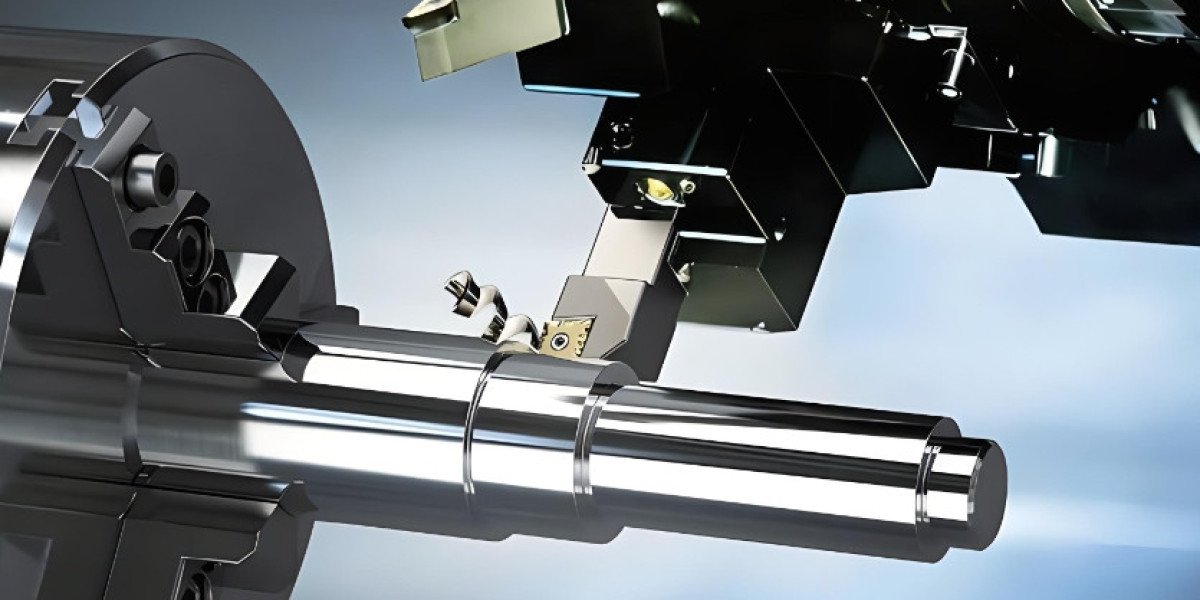In the ever-evolving realm of manufacturing, precision and efficiency stand as pillars shaping the industry's landscape. Among the myriad techniques and technologies that contribute to this progress, CNC turning has emerged as a pivotal process, revolutionizing the production of intricate components. This article delves into the essence of CNC turning, exploring its applications, advantages, and the role played by manufacturers specializing in CNC turned parts.
Understanding CNC Turning
CNC, an acronym for Computer Numerical Control, refers to the automated control of machining tools and 3D printers by means of a computer. In the context of turning, CNC involves the manipulation of a lathe machine through programmed instructions to shape raw materials into precise components. The process is especially renowned for its efficiency in crafting cylindrical or round parts.
CNC turning is instrumental in the production of components with complex geometries, ranging from simple shafts and bushings to intricate aerospace and medical components. The versatility of CNC turning lies in its ability to work with various materials, including metals, plastics, and composites, offering a wide array of possibilities for manufacturers.
Key Components:
In the CNC turning process, several key components work in tandem to deliver precise and accurate results. These components include the lathe machine, cutting tools, workholding devices, and the CNC controller.
Lathe Machine: The heart of the CNC turning process is the lathe machine, which rotates the workpiece. Modern CNC lathes come equipped with multiple axes, allowing for increased complexity in the machining process.
Cutting Tools: CNC turning employs a variety of cutting tools, each designed for specific tasks. These tools are precisely controlled by the CNC system to achieve intricate shapes and smooth finishes.
Workholding Devices: To secure the workpiece in place during machining, specialized workholding devices such as chucks, collets, and fixtures are utilized. This ensures stability and precision throughout the turning process.
CNC Controller: Serving as the brain of the operation, the CNC controller interprets the programmed instructions and translates them into precise movements for the lathe machine and cutting tools.
Applications of CNC Turning
The applications of CNC turning are vast and diverse, spanning across industries such as automotive, aerospace, medical, and electronics. From producing engine components for automotive applications to crafting intricate medical devices, CNC turning proves its versatility in manufacturing precision parts with tight tolerances.
In the aerospace sector, CNC turning plays a crucial role in the production of components like turbine shafts and aerospace fasteners. The ability to work with a variety of materials, including heat-resistant alloys, positions CNC turning as an indispensable technology for meeting the stringent requirements of aerospace applications.
Similarly, in the medical field, CNC turned components are utilized in the manufacturing of implants, surgical instruments, and diagnostic equipment. The precision offered by CNC turning ensures that these critical medical devices meet the exacting standards required for patient safety and well-being.
CNC Turned Parts Manufacturers
The expertise and precision demanded by CNC turning have given rise to specialized manufacturers focusing on CNC turned parts. These manufacturers leverage advanced machinery, skilled operators, and stringent quality control measures to deliver components that meet the highest standards.
A reputable CNC turned parts manufacturer possesses the following characteristics:
Advanced Machinery: State-of-the-art CNC lathes and turning centers equipped with multi-axis capabilities are essential for achieving complex geometries and tight tolerances.
Skilled Operators: CNC turning requires skilled operators who can program the CNC controller, set up the machine, and monitor the machining process. Their expertise ensures the production of high-quality components.
Quality Control: Stringent quality control measures, including precision measurement tools and inspection processes, are implemented to guarantee the accuracy and consistency of CNC turned parts.
Material Expertise: A reliable manufacturer understands the intricacies of working with different materials, selecting the appropriate cutting tools and machining parameters for optimal results.
Choosing the right CNC turned components manufacturer is crucial for businesses seeking high-quality, reliable parts for their products. Collaboration with a reputable manufacturer ensures not only precision in production but also adherence to deadlines and cost-effectiveness.
Advantages of CNC Turning
The adoption of CNC turning offers a myriad of advantages that contribute to its widespread use in modern manufacturing:
Precision and Accuracy: CNC turning delivers unparalleled precision and accuracy, allowing for the production of components with tight tolerances and intricate geometries.
Efficiency: The automated nature of CNC turning reduces manual labor, resulting in increased efficiency and faster production times.
Versatility: CNC turning is compatible with a wide range of materials, opening up possibilities for diverse applications across industries.
Consistency: The repeatability of CNC turning ensures consistent quality in large-scale production runs, reducing the likelihood of defects.
Cost-Effectiveness: While initial setup costs may be higher, the efficiency and precision of CNC turning ultimately contribute to long-term cost savings through reduced waste and increased productivity.
In conclusion, CNC turning stands as a cornerstone in the world of precision manufacturing. Its applications are broad and its advantages undeniable, making it an indispensable process for crafting high-quality components across various industries. As technology continues to advance, the role of CNC turned parts manufacturers becomes increasingly vital in driving innovation and meeting the ever-growing demands of the manufacturing landscape.








